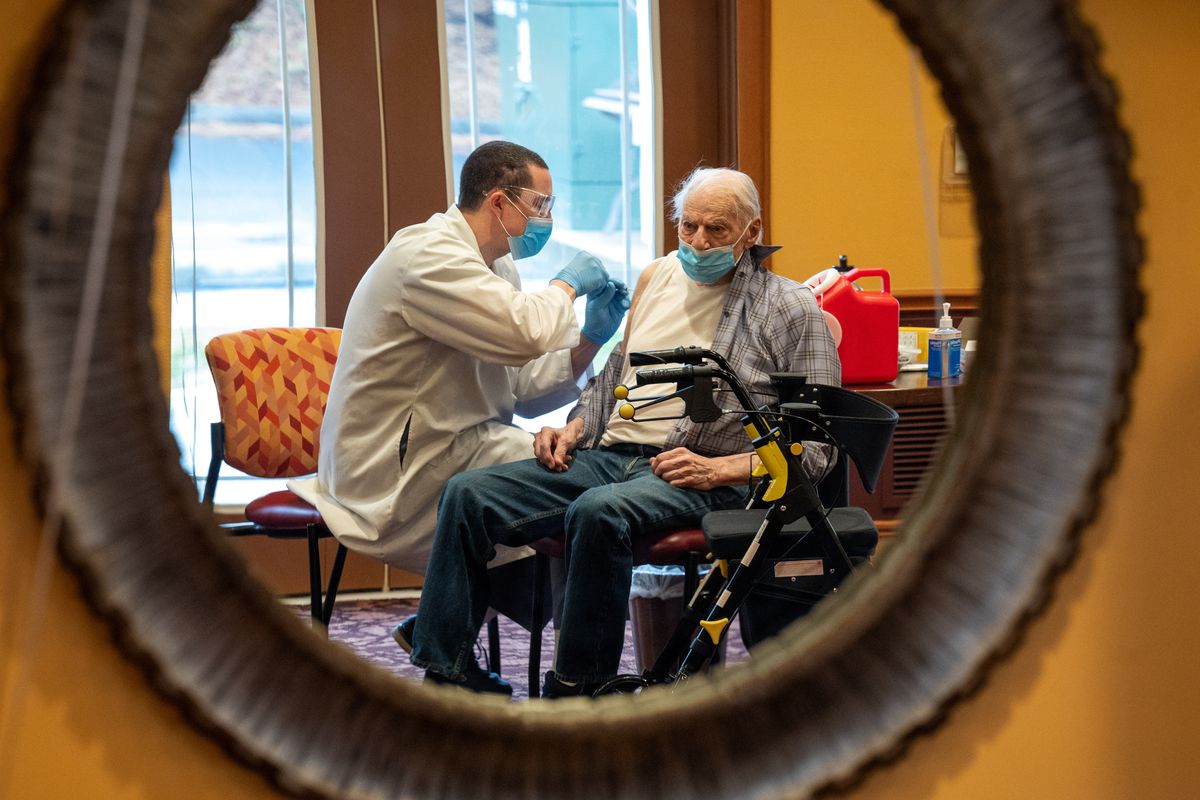This column reflects the opinion of the writer. Learn about the differences between a news story and an opinion column.
Shawn Vestal: After a rough COVID-19 winter, glimmers of optimism appear

There is, as Dr. Francisco Velázquez likes to say, light at the end of the tunnel.
On the other hand – and this is the hard part – there’s still a lot of tunnel left.
It is a strange, almost incoherent time on the pandemic front. Reasons for optimism mingle with deep exhaustion over our isolated, slowed-down lives. Vaccine optimism battles anxiety over new variants.
The things we need to do to beat this thing – still! after all this time! – remain in constant conflict with our patience, our desires, our natures. Who isn’t feeling stultified, battered, depressed, lonely? Who isn’t suffering some loss – economic, social, emotional, personal?
But there’s light up there. A wee little light, perhaps, and way up there, but still.
After all, as Velázquez, our county health officer, said last week, “When this whole thing started, we didn’t even know where the tunnel was.”
Having just concluded our two worst months of the pandemic so far, there are early signs of a transmission slowdown. The arrival of the vaccines – despite the many difficulties and frustrations of distribution – is such good news, and Velázquez notes there are possibly additional vaccines on the horizon. If these trends hold – and if we don’t all relax and start crowding into the bars for hugs and shots – the prospects of easing back toward normalcy in the near future are good, Velázquez said in a Zoom call last week.
In the same interview, Steve Smith, director of quality, planning and assessment for the Spokane Regional Health District, presented case data from the past two months. Talk about the winter of our discontent: December and January alone account for 49% of all confirmed and probable coronavirus cases since the virus made its first appearance in Spokane County in mid-March.
Smith’s data shows that our two-week rolling case average – the number of people testing positive for COVID-19 per 100,000 in population over a two-week period – rose steadily at the start of November, and has peaked and ebbed since. It was right at 500 cases per 100,000 in mid-November, climbed to 916 by early December, dropped to just under 600 by the end of that month, and rose again to 931 in mid-January – our pandemic peak.
It dropped under 600 again, but has not quite reached the levels of early November – and still stands far above the previous high points, which were just short of 250.
Still, it’s progress. While daily case numbers are erratic, Velázquez notes that in the last couple of weeks, “our ups are not as up, and our downs are lower.”
“That tells us the trend is starting to move in the right direction,” he said.
This downward line suggests we might be able to reach the state threshold to move from Phase 1 to Phase 2 of the state Roadmap to Recovery program, open up businesses and other activities a little more, in the not-too-distant future. To do so, we must meet three of four metrics: a downward trend in the case rate and hospitalization rate, capacity in the area’s ICUs, and a test positivity rate of 10% or lower.
We’re in good shape on hospital capacity and ICU space, and our case rate has shown positive signs. Our test positivity rate is very high, though, at 18%. To see more detailed information, go to coronavirus.wa.gov/what-you-need-know/roadmap-recovery-metrics.
It seems very possible that we’ll be able to check three of those boxes soon. What’s crucial, Velázquez said, is for people to keep doing what we need to do: wear masks, wash our hands, stay socially distant, get vaccinated when we can.
“We’ve been playing this song for a very long time, but I do believe it’s very important,” he said.
Despite incredible political pressure to simply open things up – pressure born of impatience, not good sense or data – we can’t get there without dancing to that familiar song.
The test positivity rate tells us as much about the amount of testing we’re doing as the number of positive tests. We’re currently testing between 1,200 and 1,500 people a day, using the gold-standard PCR test that requires lab work. That’s the test the state uses to measure the test positivity rate.
Velázquez is also interested in another piece of the testing puzzle – the expansion of rapid testing. Since late November, SRHD has also been using rapid antigen tests that do not require lab work and that provide a yes-no answer in minutes. The health district is using about 300 of those each week, chiefly in homeless shelters, as a way of checking on the spread in that population. Positive results are typically then confirmed with PCR testing.
And he said the country stands ready to get the shots in arms when more vaccine doses are available. It has been frustrating that the rollout has been so haphazard and hard to figure; the fact that there wasn’t a better statewide effort to get shots in arms and communicate more clearly with the public is maddening.
“Be patient with providers,” Velázquez said. “We are doing our best to get as many vaccines in the arms as possible, but the supply chain is not there yet.”
When it is, he said, “we’re prepared to scale up.”
It’s a long tunnel, and we’re not out of it, as frustrating as that is. We’ve got to keep doing what we can to move toward that light.
